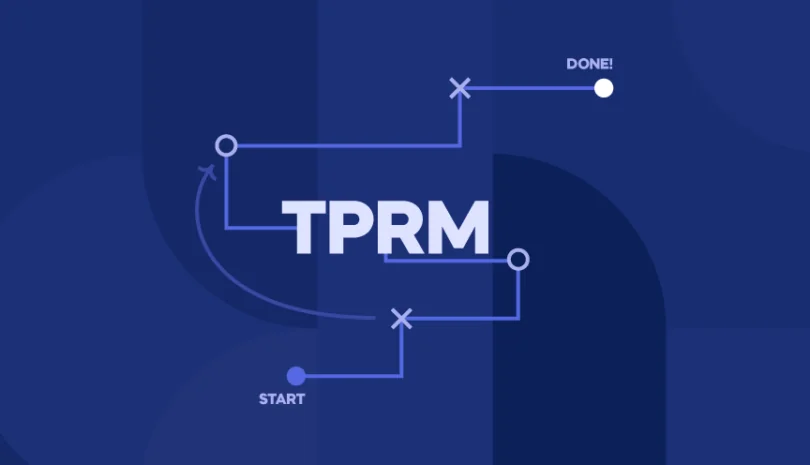According to CheckPoint, 76% of organizations are concerned about cloud security threats as attacks increased in 2022 by 48% compared to 2021. Misconfigurations remain the top threat to these organizations, while the exposure of sensitive data, insecure APIs and unauthorized access are significant as well. Although migration to the cloud continues, with many organizations adopting multi-cloud and hybrid cloud solutions, only 30% of global CISOs are confident that they can move to the cloud while maintaining security. Even though most IT and security leaders believe security is a shared responsibility, vulnerability detection is often left to the security operations team. At the same time, most boards aren’t aware of models such as the shared responsibility model for cloud security.
How can these wide gaps in perception between different leaders and security teams best be bridged? What kind of process or system can be put in place to guide them and also increase the efficiency of their cybersecurity threat detection and response? How can this be constantly optimized in an age in which 5.9 billion connections will have 5G by 2027, allowing attackers to hit organizations faster than ever?
While conducting risk assessments, implementing zero trust and multi-factor authentication and other security controls are a crucial part of every organization’s cybersecurity strategy, a new collaborative approach to risk management is necessary. Global organizations and their different teams, regardless of their industry or size, must strictly evaluate their risk management processes and determine how an integrated risk management approach helps lay the foundation of their business processes.
What is Integrated Risk Management?
Integrated Risk Management (IRM) is a continuous set of processes and practices that rely on risk-aware culture and risk-conscious technologies throughout the entire organization. It includes several important principles for improving the way an organization manages its security and is strongly linked to a company’s business strategy.
IRM combines elements of corporate governance, cyber risk management and compliance into a singular, comprehensive approach. It’s designed to be streamlined and efficient, introducing automation, cross-departmental solutions and new best practices to guarantee the collaboration of the entire organization.
What are the Benefits of an Integrated Risk Management Strategy?
An integrated risk management strategy has many elements in common with existing strategies relevant to your organization, such as governance and compliance. So what are the benefits of an integrated risk management approach? And how does IRM work with third-party risk management?
- Bringing multiple teams together. IRM strives to bring multiple teams together. In a large organization, it’s only natural for departmental silos to develop. Individuals on different teams tend to have different priorities, different values and sometimes even a completely different culture. Even more so when including third-party vendors. When IRM becomes a centrally focused priority, all teams work together to understand and implement IRM, ensuring that risk management unfolds in all areas.
- Saving time with automation. While automation isn’t necessarily a part of every IRM approach, one hallmark of IRM is saving time and improving efficiency—and automation is a great way to achieve this. With the right automated tools, you can quickly screen for potential vulnerabilities, identify threats based on triggers and possibly take action in response to issues. Whatever your approach is, you’ll be working actively to save costs and reduce wasted time. This is especially useful if you work with hundreds or thousands of vendors.
- Designating risk management as a priority. You can’t have an integrated risk management strategy unless risk management is a top priority. With IRM in place, you can start making your decisions and building business structures around risk management—rather than treating risk management as an afterthought. This enables better decision-making, fewer threats, and ultimately, your business will save time and resources.
- Top-down awareness of risk management. Generally, organizations plan their IRM strategies from the top down. CEOs and other top-level decision-makers spearhead the change in culture and infrastructure. Top-down cultural change tends to be easier to manage and last longer.
- Empowering third-party resilience. IRM helps organizations identify significant current and future risks posed by third parties and identify the best option for risk remediation. This builds trust not only with potential business partners but also with suppliers, vendors, third parties, outsourced services and partners. With data breaches announced in headlines almost every day, it’s more important than ever for businesses to know that their potential business partners and other vendors can properly manage their own risk before doing business with them.
How Can Organizations Develop a Successful Integrated Risk Management Framework?
According to Gartner, integrated risk management (IRM) includes six specific, unique attributes which must all be addressed together to be effective:
1. Strategy and plan. IRM requires you to create and implement an overall framework that helps you execute effective ground-level tactics. You need to set goals, establish priorities and design a system that allows you to achieve them.
2. Assessment. With assessment, you must identify, evaluate and prioritize different risks facing your organization, as well as your third-party vendors. This is a proactive element in your strategy, requiring you to anticipate and research potential threats.
3. Response. When you identify a risk or face an imminent threat, you need a plan in place to respond to it. How can you mobilize your team to mitigate risk or eliminate an existing threat?
4. Communication and reporting. How are you communicating the impact of your IRM strategy with stakeholders and leaders within your organization, as well as your third-party vendors who support you? You’ll need to also demonstrate that you have an advanced reporting and response plan in the event of a cyberattack.
5. Monitoring. With monitoring, you establish systems that allow you to observe and review governance objectives, risks and risk mitigation and controls. To properly manage IRM, you need to monitor your organization as well as your third parties.
6. Technology. Design and implement technologies to help you solidify your integrated risk management solution and architecture.
How to Implement an Integrated Risk Management Program
Ideally, your integrated risk management should be a team effort that includes your CIO, CISO and management teams. Together you will need to address these six pillars and implement an IRM program in your organization.
Here are a few of these important steps:
- Tie cybersecurity and risk management to business outcomes. You may need to convince directors, decision-makers and other stakeholders that IRM is worth pursuing and will ultimately be beneficial for the organization. Showing how cybersecurity and risk management are tied to measurable business results is the best way to achieve this. For example, the average cost of a data breach in the United States is $3.86 million; what would be the cost necessary to prevent this? What other benefits will your organization see by implementing an IRM strategy?
- Develop a risk-aware culture. A key feature of IRM is creating and nurturing a “risk-aware” and “risk-engaged” culture. In other words, every individual within your organization needs to take risk management seriously, and collectively, you should be working together to reduce risk and improve security. Cultural changes can be hard to implement, especially in large organizations, so you’ll need the coordination of multiple leaders to begin this process.
- Consider risk in all strategic decisions. Strategic decisions, whether they’re coming straight from the top of the organization or are being handled by middle managers, should always be made with risk management in mind. Better risk handling and more intelligent risk calculations can lead to better business outcomes at all levels.
- Evaluate your approach and improve upon it. It’s rare for IRM strategies to be implemented perfectly from the beginning. Instead, it’s vital to evaluate your approach’s effectiveness and keep issuing updates to make it better. How much are you spending on your IRM strategy? What kinds of business results are you seeing as a result? Are there better ways you can develop a risk-aware culture? What are the biggest inconsistencies or inefficiencies with your strategy?
How Panorays Helps You Implement IRM with Third Parties
IRM strategies require a gradual, phased approach for the best results. While this system requires meticulous planning and extensive investment, it has the power to completely transform your organization.
Panorays helps you integrate this approach by monitoring third-party cyber risk, collaborating with other risk domains, such as financial, geopolitical, governance risk and operational risk. With Panorays, your organization can quickly and easily automate third-party security risk evaluation and management, handling the whole process from inherent to residual risk, remediation and ongoing monitoring. The platform’s extended attack surface monitoring discovers third and fourth-party digital connections, giving you greater visibility into your digital supply chain. Panorays can also be integrated into your current incident management, threat intelligence or SIEM solutions to help remediate future strategic risks.
Interested in bringing IRM to your organization or streamlining your third-party security workflow? Get started with a Free Account today to start developing an integrated approach to your risk management process.
FAQs
Integrated risk management (IRM) is a company-wide approach that determines an organization’s processes and policies related to risk. IRM centers risk as a critical part of any organization’s business strategy, striving to make the risk management process as efficient as possible by emphasizing a collaborative approach to risk management activities.
According to Gartner, the six main attributes of integrated risk management are:
– Strategy and plan. Implement an integrated risk management framework aligned with your company’s strategic business objectives. Your strategy should also include insights from senior management and risk teams, establish the company’s risk appetite, and meet regulatory compliance.
– Assessment. Risks must be identified, evaluated and prioritized across the entire business operations.
– Response. Risks should be mitigated and remediated according to the types and levels of risk.
– Communication and reporting. Identifying and documenting risks and reporting them to the relevant management and risk teams.
– Monitoring. Putting a process in place to track and monitor vulnerabilities, risk ownership and policies related to regulatory compliance.
– Technology. The design and use of SaaS and other technology that is part of an IRM tool or integrated risk management solution.
Integrated risk management is important to organizations because it delivers more accurate data to users and risk and management teams, improving the performance of both risk management efforts and risk response. This can be critical in the event of a natural disaster or other issues that prevent a company from achieving minimal performance. Integrated risk management also helps an organization meet governance, risk and compliance regulations within its predetermined budget. IRM is also a flexible system that allows organizations to build new organizational structures when companies change their management, such as a merger or acquisition.
While both integrated risk management (IRM) and enterprise risk management (ERM) evaluate risk in an organization, IRM focuses on technological risk whereas ERM focuses on the business impact of those risks. ERM is more strategic and business-oriented, involving the board and management teams while IRM is more hands-on. For example, ERM is focused more on preventing regulatory compliance violations while IRM may focus on security controls such as network monitoring.



